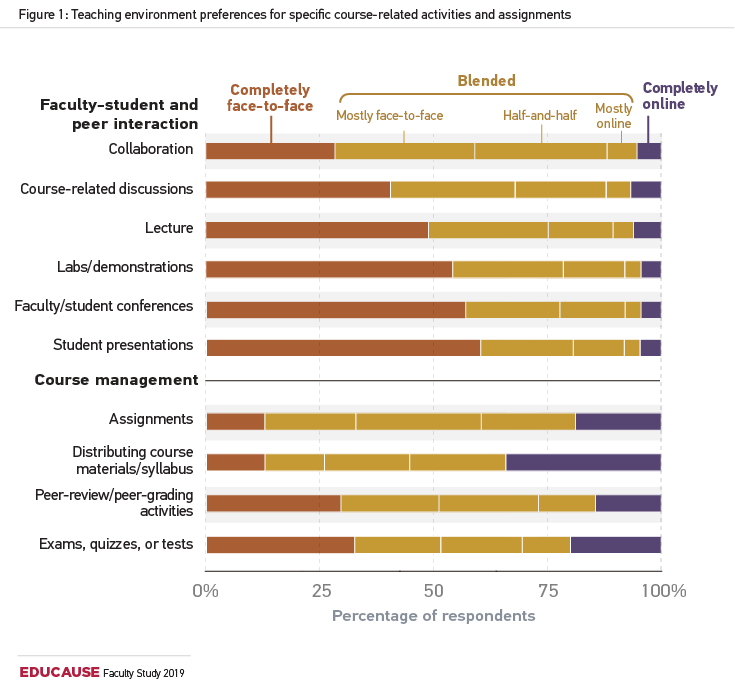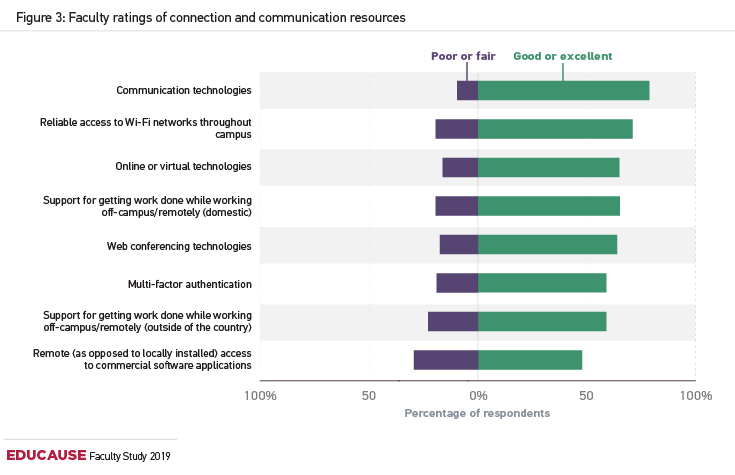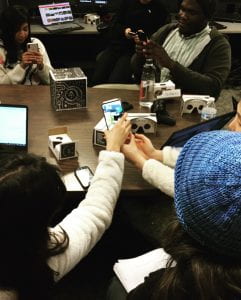Posts Tagged ‘AR augmented reality’
AR and disinformation
Augmented Reality Versus Disinformation – How “Escape Fake” Fights the Battle
+++++++++++++++++++
More on disinformation in this IMS blog
https://blog.stcloudstate.edu/ims?s=disinformation
Immersive Teaching for SCSU
As part of our involvement with the Extended Reality Community of Practice, InforMedia Services and SCSU VizLab are offering the following workshops / introductions in augmented and virtual reality:
– Wednesday, March 18, 3PM, MC 205 (directions to MC 205: https://youtu.be/jjpLR3FnBLI )
Intro to 360 Video: easy adoption of virtual reality in your classroom
Plamen Miltenoff will lead exploration of resources; capturing 360 images and videos; hands-on session on creating virtual tours with existing and acquired imagery.
– Wednesday, March 25, 3PM, MC 205 (directions to MC 205: https://youtu.be/jjpLR3FnBLI )
Intro to Augmented Reality
Alan Srock and Mark Gill will demonstrate the use of the Merge Cube and other augmented reality tools in their courses.
Plamen Miltenoff will lead hands-on session on creating basic AR content with Metaverse.
– Wednesday, April 1, 3PM, MC 205 (directions to MC 205: https://youtu.be/jjpLR3FnBLI )
Intro to Virtual Reality
Mark Gill, Alan Srock and Plamen Miltenoff will demonstrate AltSpaceVR and Virbela.
Hands-on session on creating learning spaces in virtual reality.
These sessions will share ready-to-go resources as well as hands-on creation of materials suitable for most disciplines taught on this campus.
IM 690 VR and AR lab
IM 690 Virtual Reality and Augmented Reality. short link: http://bit.ly/IM690lab
IM 690 lab plan for Feb. 18, MC 205: Experience VR and AR
What is an “avatar” and why do we need to know how it works?
How does the book (and the movie) “Ready Player One” project the education of the future
Peter Rubin “Future Present” pictures XR beyond education. How would such changes in the society and our behavior influence education.
Readings:
each group selected one article of this selection: https://blog.stcloudstate.edu/ims/2020/02/11/immersive-reality-and-instructional-design/
to discuss the approach of an Instructional Designer to XR
Announcements:
https://blog.stcloudstate.edu/ims/2020/02/07/educators-in-vr/
https://blog.stcloudstate.edu/ims/2020/01/30/realities360-conference/
Translating Training Requirements into Immersive Experience
Virtual Reality Technologies for Learning Designers
Virtual Reality Technologies for Learning Designers
Inter
Inter-cognitive and Intra-cognitive communication in VR: https://slides.com/michaelvallance/deck-25c189#/
https://twitter.com/eco_onis/status/1230142463593123846
https://www.youtube.com/channel/UCGHRSovY-KvlbJHkYnIC-aA
People with dementia
Free resources:
https://blog.stcloudstate.edu/ims?s=free+audio, free sound, free multimedia
Lab work:
- Video 360 as VR entry level
- During Lab work on Jan 28, we experienced Video 360 cardboard movies
let’s take 5-10 min and check out the following videos (select and watch at least three of them)- F2F students, please Google Cardboard
- Online students, please view on your computer or mobile devices, if you don’t have googles at your house (you can purchase now goggles for $5-7 from second-hand stores such as Goodwill)
- Both F2F and online students. Here directions how to easily open the movies on your mobile devices:
- Copy the URL and email it to yourself.
Open the email on your phone and click on the link
If you have goggles, click on the appropriate icon lower right corner and insert the phone in the goggles - Open your D2L course on your phone (you can use the mobile app).
Go to the D2L Content Module with these directions and click on the link.
After the link opens, insert phone in the goggles to watch the video
- Copy the URL and email it to yourself.
- Videos:
While watching the videos, consider the following objectives:
– Does this particular technology fit in the instructional design (ID) frames and theories covered, e.g. PBL, CBL, Activity Theory, ADDIE Model, TIM etc. (https://blog.stcloudstate.edu/ims/2020/01/29/im-690-id-theory-and-practice/ ). Can you connect the current state, but also the potential of this technology with the any of these frameworks and theories, e.g., how would Google Tour Creator or any of these videos fits in the Analysis – Design – Development – Implementation – Evaluation process? Or, how do you envision your Google Tour Creator project or any of these videos to fit in the Entry – Adoption – Adaptation – Infusion – Transformation process?
- During Lab work on Jan 28, we experienced Video 360 cardboard movies
– how does this particular technology fit in the instructional design (ID) frames and theories covered so far?
– what models and ideas from the videos you will see seem possible to be replicated by you?
Assignment: Use Google Cardboard to watch at least three of the following options
YouTube:
Elephants (think how it can be used for education)
https://youtu.be/2bpICIClAIg
Sharks (think how it can be used for education)
https://youtu.be/aQd41nbQM-U
Solar system
https://youtu.be/0ytyMKa8aps
Dementia
https://youtu.be/R-Rcbj_qR4g
Facebook
https://www.facebook.com/EgyptVR/photos/a.1185857428100641/1185856994767351/
From Peter Rubin’s Future Presence: here is a link https://blog.stcloudstate.edu/ims/2019/03/25/peter-rubin-future-presence/ if you want to learn more
Empathy, Chris Milk, https://youtu.be/iXHil1TPxvA
Clouds Over Sidra, https://youtu.be/mUosdCQsMkM
- Assignment: Group work
- Find one F2F and one online peer to form a group.
Based on the questions/directions before you started watching the videos:
– Does this particular technology fit in the instructional design (ID) frames and theories covered. e.g. PBL, CBL, Activity Theory, ADDIE Model, TIM etc. (https://blog.stcloudstate.edu/ims/2020/01/29/im-690-id-theory-and-practice/ ). Can you connect the current state, but also the potential of this technology with the any of these frameworks and theories, e.g., how would Google Tour Creator or any of these videos fits in the Analysis – Design – Development – Implementation – Evaluation process? Or, how do you envision your Google Tour Creator project or any of these videos to fit in the Entry – Adoption – Adaptation – Infusion – Transformation process?
– how does this particular technology fit in the instructional design (ID) frames and theories covered so far?
– what models and ideas from the videos you will see seem possible to be replicated by you?
exchange thoughts with your peers and make a plan to create similar educational product
- Find one F2F and one online peer to form a group.
-
- Post your writing in the following D2L Discussions thread: https://stcloudstate.learn.minnstate.edu/d2l/le/4819732/discussions/threads/43483637/View
- Lenovo DayDream as VR advanced level
- Recording in DayDream
https://skarredghost.com/2018/08/17/how-to-shoot-cool-screenshots-videos-lenovo-mirage-solo-and-save-them-on-pc/ - Using the controller
https://support.google.com/daydream/answer/7184597?hl=en - Using the menu
- Watching 360 video in YouTube
- Using keyboard to search
- Using voice command to search
- Using Labster. https://www.labster.com/
- Record how far in the lab you managed to proceed
- Playing the games
- Evaluate the ability of the game you watched to be incorporated in the educational process
- Recording in DayDream
Assignment: In 10-15 min (mind your peers, since we have only headset), do your best to evaluate one educational app (e.g., Labster) and one leisure app (games).
Use the same questions to evaluate Lenovo DayDream:
– Does this particular technology fit in the instructional design (ID) frames and theories covered, e.g. PBL, CBL, Activity Theory, ADDIE Model, TIM etc. (https://blog.stcloudstate.edu/ims/2020/01/29/im-690-id-theory-and-practice/ ). Can you connect the current state, but also the potential of this technology with the any of these frameworks and theories, e.g., how would Google Tour Creator or any of these videos fits in the Analysis – Design – Development – Implementation – Evaluation process? Or, how do you envision your Google Tour Creator project or any of these videos to fit in the Entry – Adoption – Adaptation – Infusion – Transformation process?
– how does this particular technology fit in the instructional design (ID) frames and theories covered so far?
– what models and ideas from the videos you will see seem possible to be replicated by you?
+++++++++++
Plamen Miltenoff, Ph.D., MLIS
Professor
320-308-3072
pmiltenoff@stcloudstate.edu
http://web.stcloudstate.edu/pmiltenoff/faculty/
schedule a meeting: https://doodle.com/digitalliteracy
find my office: https://youtu.be/QAng6b_FJqs
IM 690 Intro to AR merge cube
IM 690 Virtual Reality and Augmented Reality
A little bit of humor, before we start: Actual Reality Goggles:
Merge Cube: Intro to AR (Augmented Reality)
-
- What is Merge Cube
- Why do we need to know it
- How does it work
6 min video explaining how to start the cube
Mark Gill merge cube workshop of October 22, 2019:
https://minnstate.zoom.us/rec/share/_-FwEpGh_ElJR4XBtG3US4M7Ranreaa80yZI__sMnk-vRzQElwtvUlSuWY7tTT22
Creating Merge Cube objects, Mark Gill video tutorial (password in your D2L course
https://blog.stcloudstate.edu/ims/2019/10/17/mark-gill-how-to-mergecube/
More information on Merge Cube and comparison with other AR devices:
https://blog.stcloudstate.edu/ims/2019/08/08/sources-to-intro-vr/
+++++++++++++++++++++++
- AR with a telephone
Mark Gill explains creation of AR objects to students in an Unity workshop
SCSU AR Library Tour:
- Microsoft Hololens
SCSU SOE graduate students’ experience with Hololens:
Seeing it through Hololens:
- Microsoft Hololens 2
How to setup a Hololens
Advanced Hololens with Unity:
++++++++++++++++++++++
More resources (advanced):
Plamen Miltenoff, Ph.D., MLIS
Professor
320-308-3072
pmiltenoff@stcloudstate.edu
http://web.stcloudstate.edu/pmiltenoff/faculty/
schedule a meeting: https://doodle.com/digitalliteracy
find my office: https://youtu.be/QAng6b_FJqs
Zuckerberg live about the next decade in tech in the Silicon Valley
New findings from the EDUCAUSE 2019 Study of Faculty and Information Technology based on nearly 10,000 faculty from 120 institutions. EDUCAUSE https://t.co/4GdYW6TpVY
— obrienjo1 (@obrienjo1) February 1, 2020
2019 Study of Faculty and Information Technology
EDUCAUSE Center for Analysis and Research (ECAR)
https://library.educause.edu/resources/2019/12/2019-study-of-faculty-and-information-technology

Faculty satisfaction declines, but IT support is valued.

Faculty continue to ban student-owned devices, but is there a middle ground for effective learning?

++++
more on educause and faculty in this IMS blog
https://blog.stcloudstate.edu/ims?s=educause+faculty
3D BOYD
Learn how to scan in your own #3D objects using your mobile device FOR FREE! @QloneApp #ARVRinEDU https://t.co/IdaJiXVFyn
— Jaime Donally (@JaimeDonally) January 27, 2020
AI and privacy
The Secretive Company That Might End Privacy as We Know It: It’s taken 3 billion images from the internet to build a an AI driven database that allows US law enforcement agencies identify any stranger. from r/Futurology
Until now, technology that readily identifies everyone based on his or her face has been taboo because of its radical erosion of privacy. Tech companies capable of releasing such a tool have refrained from doing so; in 2011, Google’s chairman at the time said it was the one technology the company had held back because it could be used “in a very bad way.” Some large cities, including San Francisco, have barred police from using facial
But without public scrutiny, more than 600 law enforcement agencies have started using Clearview in the past year, according to the company, which declined to provide a list. recognition technology.
Facial recognition technology has always been controversial. It makes people nervous about Big Brother. It has a tendency to deliver false matches for certain groups, like people of color. And some facial recognition products used by the police — including Clearview’s — haven’t been vetted by independent experts.
Clearview deployed current and former Republican officials to approach police forces, offering free trials and annual licenses for as little as $2,000. Mr. Schwartz tapped his political connections to help make government officials aware of the tool, according to Mr. Ton-That.
“We have no data to suggest this tool is accurate,” said Clare Garvie, a researcher at Georgetown University’s Center on Privacy and Technology, who has studied the government’s use of facial recognition. “The larger the database, the larger the risk of misidentification because of the doppelgänger effect. They’re talking about a massive database of random people they’ve found on the internet.”
Law enforcement is using a facial recognition app with huge privacy issues Clearview AI’s software can find matches in billions of internet images. from r/technology
Part of the problem stems from a lack of oversight. There has been no real public input into adoption of Clearview’s software, and the company’s ability to safeguard data hasn’t been tested in practice. Clearview itself remained highly secretive until late 2019.
The software also appears to explicitly violate policies at Facebook and elsewhere against collecting users’ images en masse.
while there’s underlying code that could theoretically be used for augmented reality glasses that could identify people on the street, Ton-That said there were no plans for such a design.
https://www.nytimes.com/2020/01/20/opinion/facial-recognition-ban-privacy.html
In May of last year, San Francisco banned facial recognition; the neighboring city of Oakland soon followed, as did Somerville and Brookline in Massachusetts (a statewide ban may follow). In December, San Diego suspended a facial recognition program in advance of a new statewide law, which declared it illegal, coming into effect. Forty major music festivals pledged not to use the technology, and activists are calling for a nationwide ban. Many Democratic presidential candidates support at least a partial ban on the technology.
facial recognition bans are the wrong way to fight against modern surveillance. Focusing on one particular identification method misconstrues the nature of the surveillance society we’re in the process of building. Ubiquitous mass surveillance is increasingly the norm. In countries like China, a surveillance infrastructure is being built by the government for social control. In countries like the United States, it’s being built by corporations in order to influence our buying behavior, and is incidentally used by the government.
People can be identified at a distance by their heart beat or by their gait, using a laser-based system. Cameras are so good that they can read fingerprints and iris patterns from meters away. And even without any of these technologies, we can always be identified because our smartphones broadcast unique numbers called MAC addresses.
China, for example, uses multiple identification technologies to support its surveillance state.
There is a huge — and almost entirely unregulated — data broker industry in the United States that trades on our information.
This is why many companies buy license plate data from states. It’s also why companies like Google are buying health records, and part of the reason Google bought the company Fitbit, along with all of its data.
The data broker industry is almost entirely unregulated; there’s only one law — passed in Vermont in 2018 — that requires data brokers to register and explain in broad terms what kind of data they collect.
The Secretive Company That Might End Privacy as We Know It from r/technews
https://www.nytimes.com/2020/01/18/technology/clearview-privacy-facial-recognition.html
Until now, technology that readily identifies everyone based on his or her face has been taboo because of its radical erosion of privacy. Tech companies capable of releasing such a tool have refrained from doing so; in 2011, Google’s chairman at the time said it was the one technology the company had held back because it could be used “in a very bad way.” Some large cities, including San Francisco, have barred police from using facial recognition technology.
+++++++++++++
on social credit system in this IMS blog
https://blog.stcloudstate.edu/ims?s=social+credit
Magic Leap AR goggles
Magic Leap has reportedly sold only 6,000 headsets after raising $2.6 billion
byu/mspoonygp ingadgets
https://www.tomsguide.com/news/dollar26-billion-later-magic-leap-looks-in-trouble
+++++++++++++
more on magic leap in this IMS blog
https://blog.stcloudstate.edu/ims?s=magic+leap
Given that Apple is reportedly launching its own AR headset in 2022 and Apple AR glasses in 2023, Magic Leap will have to make serious improvements to its platform in order to stay in a game that will soon become a lot more competitive.
Magic Leap will also have to contend with the much-improved Hololens 2 from Microsoft on the enterprise front, as well as an expected wave of consumer AR headsets and glasses that will leverage Qualcomm’s XR2 platform. Pokemon Go creator Ninantic has already announced that it is working on AR Glasses in partnership with Qualcomm.

